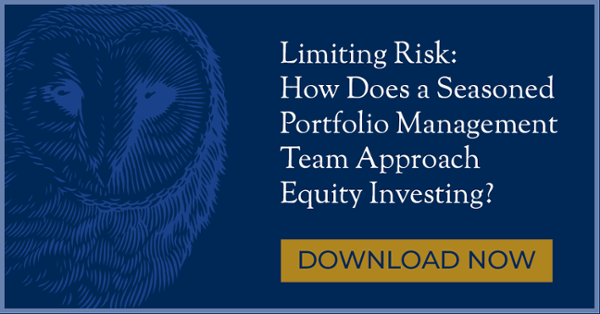Looking to Invest Toward a Cyclical Rebound? It’s Nuanced
With coronavirus vaccinations on the rise and cases trending down, it’s natural to think about what a cyclical rebound will look like, and which stocks will benefit. But investing in this cyclical bounce will be more complicated than previous recoveries, in large part because it will play out at different times and speeds across each industry and sector.
At Dana we take a long-term perspective with our holdings, and don’t position portfolios with a single overarching macro view. That said, we are nevertheless mindful of what a recovery will mean for different stocks and invest opportunistically when attractive valuation opportunities present themselves.
Below is an overview of how we are investing in companies we believe are well positioned as things turnaround:
Opportunities Began Last March
When stocks first sold off due to the pandemic, energy companies were hit with a double whammy, as an oil price war between Russia and Saudi Arabia erupted, just as global demand was poised to slow. With valuations depressed, we saw that as an opportunity, and selectively added a couple of exploration and production companies that we felt had stable balance sheets and could weather a downturn in prices. Those stocks have appreciated significantly with a bounce in oil prices.
After those initial investments, our team began to look at companies that would benefit from changes in behavior in the middle of the pandemic. Notably, these opportunities were not limited to the FAANGM stocks (Facebook, Amazon, Apple, Netflix, Google and Microsoft) that grabbed financial media headlines and played a large role in driving indices forward during the pandemic.
Beneath the surface, there were other beneficiaries, including ecommerce companies and firms that play critical roles in improving businesses’ digital experience for their customers. In our view, companies tied to these trends would benefit from secular trends poised to push forward during the pandemic, but would see an even greater revenue boost as the economy recovers.
As we moved through the year, we added stocks tied to home improvement. These companies experienced strong demand during the pandemic, as families invested in their homes, but should also benefit from strength in the housing market as the economy recovers.
From Here, the Recovery is More Complex
At this stage, some of the early recovery investment theses have played out and investing around a cyclical rebound requires a selective approach, often with insight into the market segment a business serves, and its geographic footprint.
Our approach to airline stocks serves as an example. We believe there is pent up demand for families to take vacations, and expect consumer travel demand to pick up as soon as more people receive vaccines. However, much of that travel will occur domestically, not internationally, due to restrictions in various countries.
While the consumer may travel more, we expect business travel to remain depressed. Given these trends, we have favored airline companies that are more geared toward domestic flights and leisure travel.
Investing in the hotel industry also requires a nuanced approach. Hotel REITs may focus on specific geographies, some of which lend themselves to more outdoor activity. In the early recovery, we believe these destinations will be favored. Meanwhile, some hotel chains cater more to business travel or convention activity that could remain suppressed.
Even in the technology sector, some of the usual cyclical beneficiaries such as semiconductor companies require closer inspection of who their customers are. For example, when auto companies pulled orders back in the downturn, some semiconductor businesses reallocated existing capacity to other industries. Auto demand returned quickly, leading to shortages. Demand now exceeds supply for some semiconductors, while chips for other applications (e.g., personal computing) could see demand declines.
The health care sector also offers a mixed bag of opportunity, with pent up demand for elective procedures benefiting select businesses, but strained hospital budgets weighing on others. Other entire industries, such as commercial real estate, require a wait and see approach as office spaces evolve.
In short, there will be plenty of investment opportunities as the economy bounces back, but the uneven nature of the recovery will require a selective approach.



